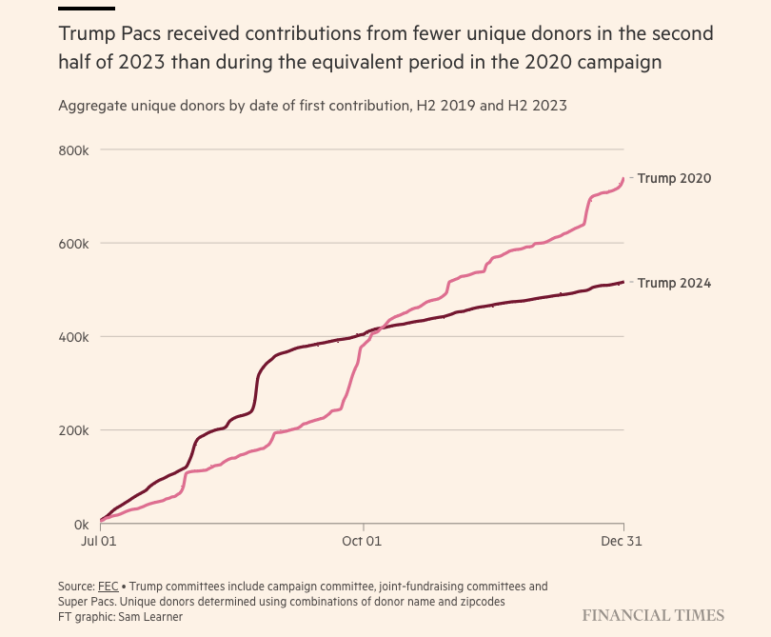

12 Tips to Make Data Come Alive in Radio Reporting
Read this article in
While investigating the shooting of three Black Lives Matter protesters in the United States last year, radio reporter Angelina Mosher Salazar found a series of poorly-focused Facebook Live video clips. More telling than the video was the audio and time sequence from those clips, which showed a disturbing camaraderie between police and an armed 17-year-old who, just 15 minutes later, would shoot into the crowd, allegedly killing two people and injuring a third.
The victims were among a group in Kenosha, Wisconsin, protesting the police shooting of Jacob Blake, a 29-year-old Black man who was shot seven times in the back. Mosher Salazar’s report revealed that law enforcement officers at the protest praised the heavily armed counter-protest group, with one saying: “We really appreciate you guys, we really do.” Officers also handed out bottled water to the rifle-toting teenager.
“I feel like the audio — and radio itself — was actually the perfect medium for this data-informed story,” says Mosher Salazar, who works at station WUWM, part of the National Public Radio group. “It really stripped out everything that could be distracting to the audience from what was really happening in this moment.”
Without a primary visual medium, and with long-held conventions on limiting the number of statistics in audio scripts, radio journalism has trailed other media formats in data journalism. However, experts say new tools and techniques can help radio reporters broaden their storytelling repertoires, populate digital versions of their audio stories with in-depth data, and empower listeners to visualize more complex datasets without any actual visuals.
Data on the Radio
Nuzulack Dausen, managing director of the Tanzanian journalism training group Nukta Africa, says these skills are especially important for accountability in sub-Saharan Africa, where radio is the dominant source of information.
“Radio remains the major source of news here, and especially in rural areas; in some countries, it accounts for primary information received by two-thirds of the whole population,” Dausen explains. “The extent to which it can support accountability journalism is big because these audiences cause leaders to react. Data is an important tool, and radio reporters need ways to access it and find leads from it for themselves, and to contextualize and simplify it for listeners.”
Tanzania suggests there is much potential. The East African country has a population of nearly 60 million, and internet penetration there has jumped from 34% to 49% in the past five years. At the same time, “remarkably,” Dausen says, the number of radio stations has grown at a similar rate. These twin phenomena offer an opportunity for radio reporters to direct more listeners to in-depth data presentations on their station websites.
Dausen says radio data training in Tanzania is currently focused on contextualizing information, finding simple alternatives to percentages, and on “interviewing spreadsheets,” because concepts like data analysis are intimidating to many reporters.
“Everyone fears numbers, and journalists here are not very exposed to technology, so we’re starting slowly with narrative concepts they already know, rather than bombarding reporters with tools they’ve never heard of,” he says. “For instance, we’re teaching them that columns in a spreadsheet are just like human sources — ‘You can interview this column about gender and age, and comparing the answer to other columns tells you what it means.’”
He adds that local radio reporters are using simple, free tools like iLovePDF to scrape data, and curated data repositories like HURUmap both for stories and data practice.
Like Mosher Salazar, Dausen believes radio reporting can offer advantages over other media formats in personalizing and contextualizing simple data points.
It can even offer advantages in data presentation. For instance, sound allows a more visceral understanding of highly unequal numbers, as the BBC showed by using the sound of stacked gold bars to illustrate the gap between the growth of workers’ wages and corporate profits in this audiograph.
Tips from NICAR21
In a session on the topic at the NICAR21 data journalism conference — which is organized by Investigative Reporters & Editors — Mosher Salazar shared a virtual panel with Patrick Skahill, a reporter with WNPR in Connecticut, and Ally Jarmanning, a senior reporter at Boston’s WBUR station.
They shared tips on how data should be incorporated into radio scripts, and tools reporters can use to bring that data to life — from talking spreadsheets to directing listeners to online interactive maps.
“I think we’ve been lazy in radio — saying we don’t need to use numbers because our listeners don’t like numbers,’” says Mosher Salazar. “Yeah, they don’t, but we can be creative in how we use data for breaking news and impactful stories. It’s a necessary tool, and we need to boost our skillset as journalists.”
Jarmanning says there are valid reasons why many editors restrict data in radio reports to just two or three numbers, including the fact that listeners are often focused on driving, cooking, or other parallel activities.
“Listeners just can’t hold on to much information, and I try, especially in short pieces, to be very limited in the amount of numbers I’m stating,” says Jarmanning. “But there are creative solutions for data presentation, and [online] charts definitely help.”
All three panelists noted that a radio tradition of avoiding numbers has created an environment where those reporters who are interested in data often find themselves with little help at their stations.
“If you are at a small shop, like me, maybe you are the sole pioneer — not only are you the only person requesting, cleaning, and organizing the data, but you could also be the pioneer of the concept of using data journalism at your radio station,” notes Mosher Salazar. “But there are people in the community who will help you. And, at a time in the pandemic where I’ve become separated from my sources, data has become a solid, dependable source, and one I don’t have to worry about getting COVID from.”
The three panelists’ tips included these:
- Do the math for your listeners wherever possible. “If 250 people out of 1000 got vaccinated, say one in four got a jab in the arm,” says Skahill. “You are going to want to get rid of most of the numbers in your story, and only keep the ones that are essential. Do you really need to keep everything to the right of the decimal point?”
- Try free apps like TwoTone to turn data into sound. “Sonifying data can be really great,” says Skahill. “With these tools, you can basically feed in a spreadsheet and correspond the data values to music.” Skahill pointed to one example where notes from a piano, a glockenspiel, and a double bass were used to show three overlapping datasets, with higher pitch denoting higher numbers.
- Consider advanced tools that make spreadsheets talk — literally. Jarmanning says several emerging technologies — including text-to-speech services like Amazon Polly, the Megaphone microcast platform, and Python scripts — can be combined to create automated audio content from local datasets. Her colleagues at WBUR explained how they integrated these technologies, step by step, in a recent feature on a project that updated coronavirus data for individual towns.
- Read great books on radio journalism. Skahill recommends “Sound Reporting: The NPR Guide to Audio Journalism and Production,” by Jonathan Kern.
- Use the Follow That Page tool for breaking news. “This is a great website where you can enter a URL, and every time that site changes you get a notification,” Skahill explains. “I found out about this at an IRE conference, and I use it every day now. It’s a great way to be the reporter who can call a source and they say: ‘Hey, how did you find that out?’”
- Use the “two-way” spot in radio reports for complex data. Skahill says short interviews between the host of radio programs and the reporter provide a good opportunity to contextualize complex data — especially on deadline. “But be nice to your host — don’t write questions that insult your host’s knowledge of the subject,” Skahill cautions.
- Write about data in the “active voice,” using simple sentences. “You need to write for the ear, in simple sentences — subject, verb, object,” notes Skahill.
- Use additional data in visualizations on the radio website. “Yes, most numbers don’t belong in your radio script,” Skahill acknowledges. “But you’ve done all this great data work — so let it live online. Consider tools like Google Sheets, Flourish, Datawrapper, and Tableau.”
- Write your online story first — and use it to pick out your few audio data points. “If you are writing for radio, you’re basically going to have to write two stories,” says Jarmanning. “Your radio story will be heard maybe twice, but your digital script is forever. I always find it helpful with a complex, enterprisey story to write my digital script first. I then go through it with my highlighter for the quotes and numbers I really need for my radio story.”
- Try to use sound where the source, rather than the reporter, states the most important numbers. “People’s ears perk up to that more than from my voice,” says Jarmanning. “Just having them repeat the number helps.”
- Lean on the investigative journalism community if your radio station lacks data skills. “Who is going to edit you if you’re the only one doing data at your radio station?” asks Mosher Salazar. “Who is going to go over your spreadsheets or your interactive map? My number one suggestion is: dive into your data community… There are helpdesks and editors out there who will help.”
- Use simple data points for breaking news radio stories. From a routine Milwaukee COVID-19 briefing, Mosher Salazar and other reporters heard that one zip code in Milwaukee’s south side had shown a disproportionate number of infections, with few other details. So Mosher Salazar opened an online tool that analyzes US economic and demographic data — ProximityOne – to see if there were any unusual features about that neighborhood that could be connected. “It turned out to have the highest concentration of Latinos in the entire state of Wisconsin,” she says. “We had already seen that COVID cases were disproportionately affecting the African American community in the city’s north side, and now this.”
Skahill warns that — because radio reports need to use fewer data points — radio reporters need “to triple-check and quadruple-check” the accuracy of those numbers.
However, he echoed his fellow NICAR panelists in stating that the biggest step is for reporters to summon the confidence to use data.
“It’s like fighting impostor syndrome,” Skahill says.” No one needs to bestow the ‘data journalist’ title upon you at a radio station: if you’re curious, then learn this stuff and just do it.”
Interested in more from NICAR21? The full schedule can be seen here. Recorded sessions can be accessed and viewed until March 2022 via this link (though you will need to register).
Additional Resources
Data Journalism: The GIJN Collection
A Global Tour of Top Investigative Podcasts: The 2020 Edition
7 Things I Learned Producing My First Investigative Podcast
 Rowan Philp is a reporter for GIJN. He was formerly chief reporter for South Africa’s Sunday Times. As a foreign correspondent, he has reported on news, politics, corruption, and conflict from more than two dozen countries around the world.
Rowan Philp is a reporter for GIJN. He was formerly chief reporter for South Africa’s Sunday Times. As a foreign correspondent, he has reported on news, politics, corruption, and conflict from more than two dozen countries around the world.








